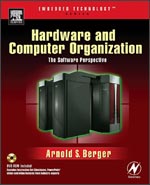 Title: Hardware and Computer Organization (Embedded Technology)
Title: Hardware and Computer Organization (Embedded Technology)| Link type | Link | Password |
|---|---|---|
| Mirror | http://ifile.it/2wnm45k | www.freebookspot.com |
| Reup | http://ifile.it/urzxmth | books_for_all |
| Reup (Mirror) | http://rapidshare.com/files/298431574/HACO-0-7506-7886-0-AB.rar.html | books_for_all |
| Book | http://depositfiles.com/files/9mzejdy9x | |
| Book | http://uploading.com/files/46m3ddd4/0750678860HardwareB.rar/ |